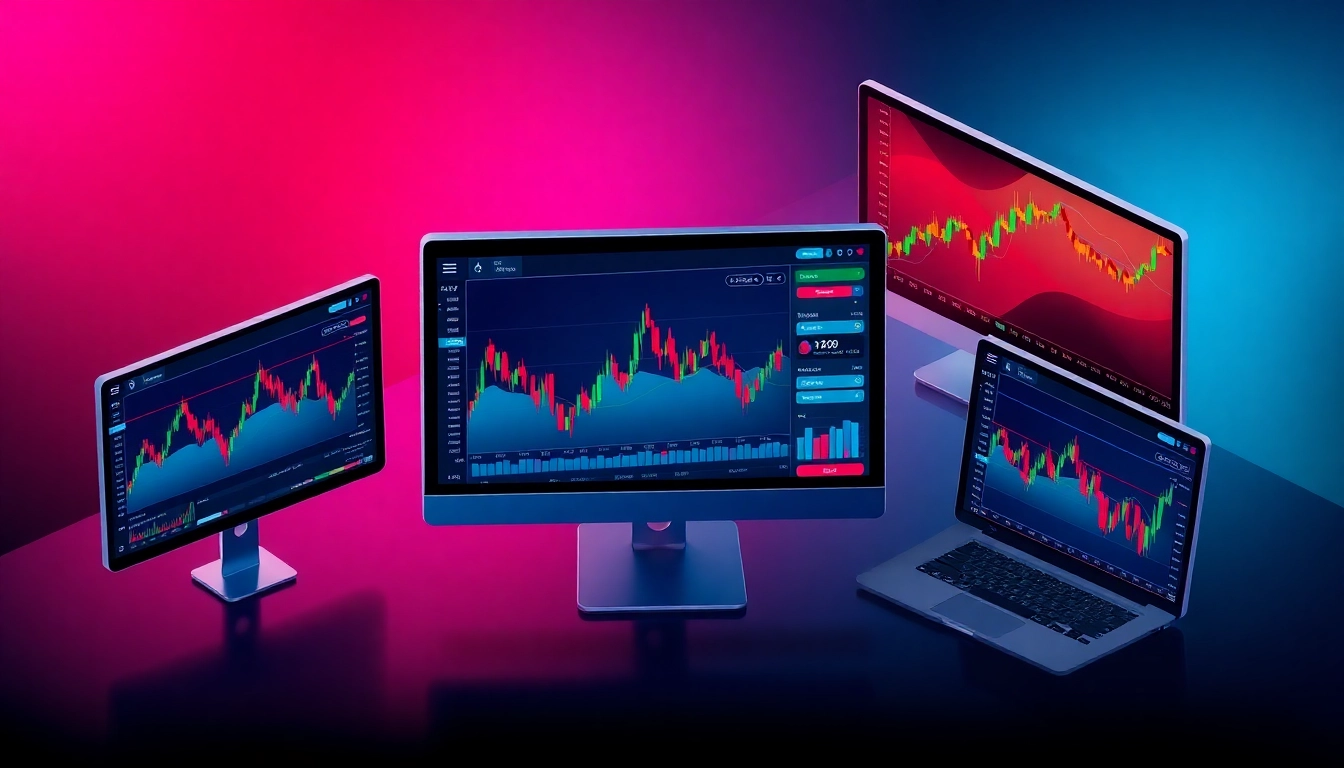Understanding Trading View: Features and Functionalities
In today’s fast-paced financial markets, having access to a comprehensive and reliable charting platform is essential for traders and investors alike. TradingView has established itself as a leading tool, offering advanced features that cater to both beginners and seasoned professionals. As a supercharged platform and social network for market participants, trading view provides a rich environment for analyzing, sharing, and executing trading strategies. To fully leverage its potential, understanding the core tools and how they operate is crucial. Whether you’re tracking cryptocurrencies, stocks, forex, or commodities, TradingView’s intuitive design and robust functionalities empower users to make informed decisions.
For a detailed overview, visit the official site trading view and explore the extensive features that set this platform apart from competitors.
Setting Up Your Trading View for Success
Creating Watchlists and Alerts
Effective market tracking begins with personalized watchlists. TradingView allows users to customize their watchlists with assets across multiple markets—stocks, cryptocurrencies, forex, and more. To maximize efficiency, traders should organize assets logically, perhaps by sectors or trading timeframes. Alerts are equally vital; they notify traders of price movements, pattern formations, or indicator signals, enabling timely decision-making. Setting up alerts is straightforward: users select an asset, define the condition (e.g., price crossing a specific point), and choose notification modes—be it pop-ups, emails, or app notifications.
Integrating Trading Strategies and Indicators
A core aspect of successful trading lies in strategy development. TradingView offers a vast library of technical indicators—moving averages, RSI, MACD, Bollinger Bands—that can be combined to create custom strategies. Users can also import or script their own indicators via Pinescript, TradingView’s native programming language. Integrating multiple indicators helps confirm signals, reduce false entries, and refine trading entries and exits. For example, a trader might use a combination of moving average crossovers with RSI divergence to identify high-probability trade setups.
Advanced Trading Techniques with Trading View
Technical Analysis and Pattern Recognition
Technical analysis remains the backbone of many trading strategies. TradingView excels in visual pattern recognition, offering tools to identify head and shoulders, double tops/bottoms, triangles, and flags. Automated pattern detection tools and chart annotations allow traders to mark critical levels and anticipate potential breakout zones. Combining pattern recognition with volume analysis can improve accuracy, as high volumes often validate breakout signals.
Backtesting and Strategy Testing
Before risking real capital, traders can backtest strategies directly in TradingView. By applying historical data, users can evaluate the profitability, risk-reward ratio, and drawdowns of their strategies. The platform’s strategy tester provides detailed reports, including win rate, average profit/loss, and equity curves. This process helps identify the strengths and weaknesses of a strategy under different market conditions, enabling refinement before live trading.
Automating Trades and Alerts
TradingView’s automation capabilities allow traders to set up alerts that can trigger external actions through integrations with brokers or third-party automation tools. While TradingView itself does not execute trades, it can send signals to trading bots or APIs that place orders in real-time. This automation reduces emotional trading, ensures prompt execution, and allows for systematic trading approaches based on predefined criteria.
Optimizing Performance and User Experience
Best Practices for Panel and Chart Management
Managing multiple charts and panels efficiently ensures smooth workflow. Organizing charts into tabs, saving templates, and using hotkeys can significantly improve speed. Users should also optimize timeframes and indicators to avoid clutter and bog down the system, especially on devices with limited processing power. Clear, focused charts enhance decision-making by reducing visual noise.
Speed and Reliability Tips
To ensure seamless trading, maintain a stable internet connection, regularly clear cache, and update the platform app or browser. TradingView’s cloud-based architecture provides high reliability, but users should enable notifications only for essential alerts to prevent distractions. Using dedicated devices or high-performance computers can further improve responsiveness.
Leveraging Community Ideas and Insights
TradingView’s social feature allows traders to share ideas, comment, and learn from the community. Analyzing popular ideas and trade setups shared by experienced traders can provide new perspectives. Engaging actively with the community also helps refine your skills and stay updated on market sentiment. Remember to validate shared ideas through your own analysis before execution.
Measuring Success and Continuous Improvement
Tracking Your Trading Performance
Consistent performance tracking is vital for growth. Utilize TradingView’s built-in paper trading feature or external portfolio trackers to monitor profitability, risk management, and adherence to trading plans. Regular review of trade logs and performance metrics helps identify patterns, strengths, and areas needing improvement.
Staying Updated with Market Trends
Successful traders stay informed of macroeconomic data, geopolitical events, and market news. TradingView offers real-time news feeds and economic calendars integrated into the platform. Combining technical analysis with fundamental insights ensures a holistic approach to trading.
Learning Resources and Support
Continuous education is key. TradingView provides webinars, tutorials, and an active community forum. Additionally, numerous third-party resources, courses, and expert analyses are accessible to deepen your market understanding. Regularly engaging with these resources develops your skill set and adapts your strategies to evolving market conditions.



